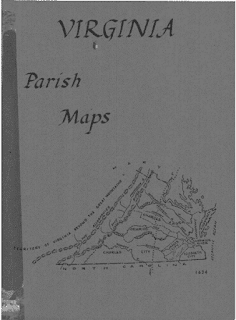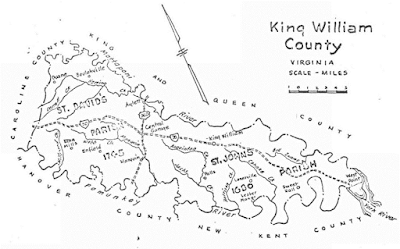Where Are the Wills and Probate Proceedings?
Rarely is it that the obstacle to accessing ancestor's court records is "figuring out" the filing logic of the court recorder. Sure, we often have issues finding the correct collections, or court holdings, but once the records are in hand, we have indices, dates, page numbers from abstracts, or even loose papers that can be perused in order to lead us to our ancestors. Yet, a recent Hinds County research project in Jackson and Raymond Mississippi County Clerks’ Office 1800 court records initially led us down dead-ends. We had in hand the ancestry.com produced 1852 Will which named children, and the desired fate and distribution of slaves. However, the 1875 associated probate obviously made the 1852 slave filled Will mute. Plus, our Moseley acquired additional land up after the writing of his 1852 will.
Neither Raymond nor Jackson District Court Clerks were successful in locating the probate supporting papers. The a3Genealogy question was where were the court recording that support the familysearch.org index?
 |
| Probate Proceedings, beginning 8 Mar 1875 |
What the Probate might tell us?
Supporting documents were needed to uncover Inventories, Appraisals, Receipts needed to assess business dealings and associates. Plus Guardianship records were needed to analyze kinship and familiar relationships as well as land ownership or land bequeathed to children and family. Probates are filled with hints of community associates through witnesses, testimonies and affidavits. Yes, there are abstracts, but they are incomplete and often misleading. This comprehensive research required access to original records, or at minimum copies of the full records.
Tips and Hints to Uncovering Court Records
Step 1: Learn the court systems for the era and place of your ancestor. This may require engaging court recorders. Mississippi utilizes Chancery Courts. Hinds County has two relevant Chancery District Courts: Raymond, MS -District 2 (the historically older) and Jackson MS - District 1, a significantly larger archival collection.
 |
| "Mississippi, U.S., Wills and Probate
Records, 1780-1982," 1902; Ancestry.com |
Know that there are selected court record images on ancestry.com. They too are vital, but lack the full details of the Chancery Court proceedings.
Step 2: Understand the Index to Estates? I'm sure, not unique to Mississippi, but the Index to Estates, initially appeared senseless.
The
a3Genealogy team turned to FamilySearch.org digitized records for Hinds County, MS:
Index to Estates, Mississippi Probate Records, 1781 - 1930 for Hinds County, Chancery records. Undertaking a page by page search, eighty images in, we found
our subject #131. (See above Index image).
What type of numbering system was this? Number 71 was followed by 112, followed by 131, followed by #141 on image 80. Although the numbering system appears random, the dates are sequential.
Forgive us for thinking the #131 was either a page reference or sequential case reference. Clearly this was neither a sequential numbering system by cases, or page numbers.
It was discovered that #131 was the key to finding our Moseley subject and the research needed within the Chancery Records. Yes, the person's case file is given a number, and the researcher must for the occurrences of that case number. The key is to 1) find the first occurrence of your subject which will require a page by page search since these earlier pages are not number; and 2) follow their personal case file number by jumping to the next date proffered by the the index.
Step 3: Create an At-A-Glance Timeline. This research is not for the weak at heart. There's no easy way as page numbers are nonexistent and these books are not arranged alphabetically by last name (or otherwise). By using the index (above with dates) we suggest researchers create an At-A-Glance timeline. Who wants to decipher or repeatedly reference these scribbles?
The index for #131 was lengthy, but a timeline will save hours wasted. Here is a sample of ours (nothing fancy) using the dated information provided by the index:
- 8 May 1875 Will filed and ordered probated
- 28 May 1875 Pet. Filed with will
- 29 May 1875
Pet for letters filed
- 31 May 1875 Letters Granted , [&] warrant of appraisement same day
- 4 and 8 Nov 1875 Order to sell per. property made 4 and 8 Nov 1875
- 2 Feb 1876 Order to sell personal property
- 4 Oct 1876 Motion for Guardian Ad Litem & Conservator Filed
|
Step 4: Follow your subject using the case number and the dates in you case number.
Remember, at this point you are just looking for your case number. For us, that number was #131. This was a case that continued until the early 1900's. So, not surprising when the 3rd Administrator was identified in 1879 on image #489 of 676 in 1878.
Family names, kinships, spouses and maiden names were given as expected. Of course deaths were noted, and changes in the administrators were provided with details (deceased, ill, etc). But, for this case one learns a lot about pre-Civil war and the Reconstruction Era of Hinds County, MS.
Basically, we learned more than we bargained for and the client was slack jawed with surprise and wonder. As we have client's permission, we will share more of the case in an upcoming blog post.
For more about researching in Mississippi be sure to review Researching in Mississippi: Mississippi Gulf Coast.
"Mississippi Probate Records, 1781-1930," William O. Moseley, Hinds Estate index 1872-1884, May 1875, Image 80; FamilySearch, viewed 9 Jul 2021 (click link).
Kathleen Brandt
Be Historically Correct
a3genealogy.com
Accurate Accessible Answers
a3genealogy@gmail.com


















